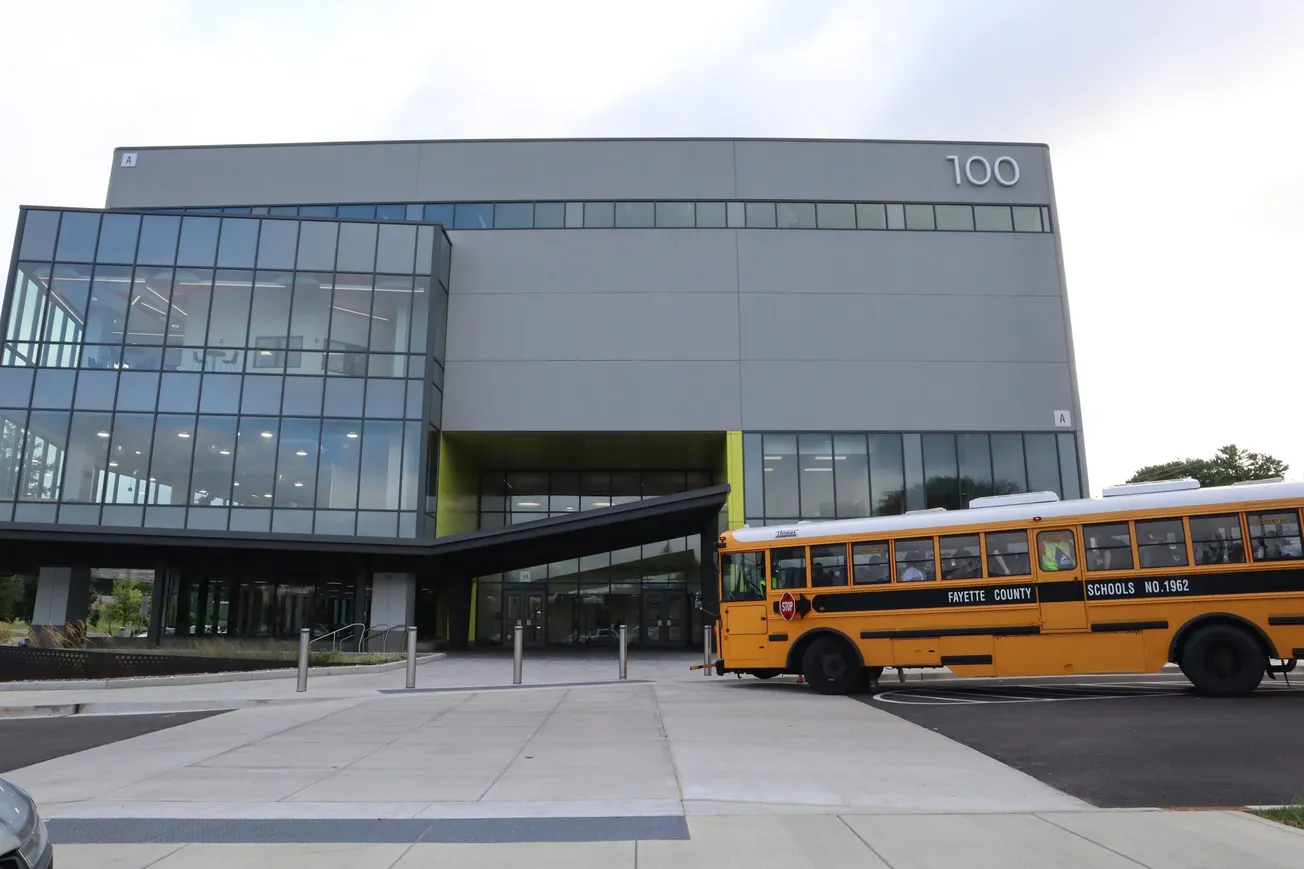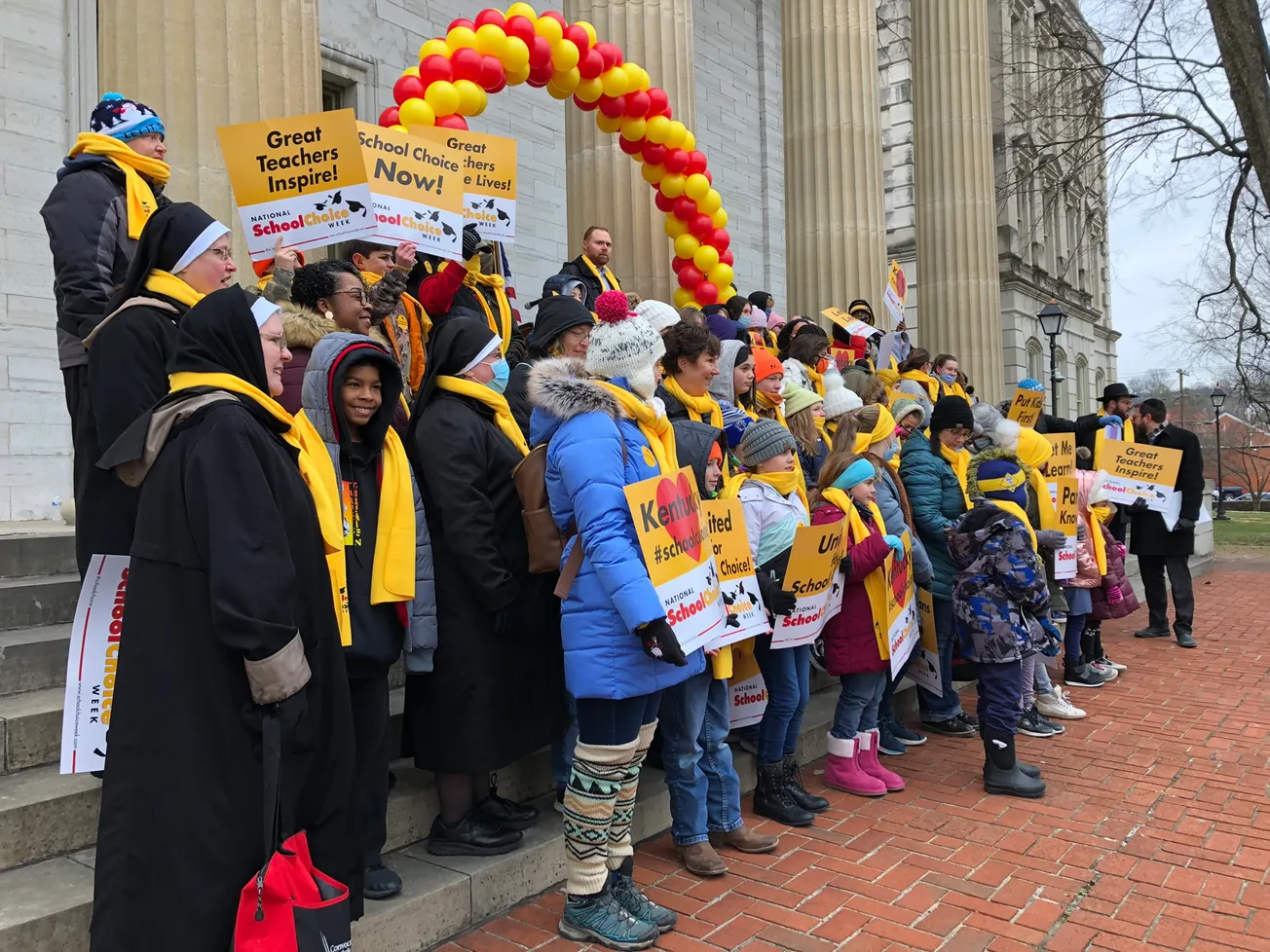Table of Contents
The fate of charter schools in Kentucky is currently before the commonwealth's highest court. Here's what you ought to know about this widespread reform that has yet to benefit Kentucky families.
The Bluegrass Institute's amicus brief in the case is here:
What are public charter schools?
Innovative public schools of choice that operate with greater flexibility than traditional public schools, allowing innovative teaching methods.
Tuition-free and independently operated, with autonomy in exchange for meeting strict accountability standards.
Public schools of choice that must accept all students who apply – regardless of race, disability or academic ability – on a first-come, first-served basis. Most state laws require charter schools with more applicants than available seats to hold a random lottery to determine admission.
Charter schools are not allowed to “cherry pick” students based on demographic characteristics or deny admission to students with behavioral issues or disabilities.
How do public charter schools differ from traditional public schools?
They operate independently, offering greater flexibility in staffing, curriculum design, budgeting and governance. In exchange for this autonomy, charters must meet specific performance goals outlined in their charter contracts, which are reviewed by an authorizing body. If charters fail to meet these standards, they can be closed.
Parents voluntarily enroll their children in charter schools, unlike traditional public schools, where students are typically assigned based on residence rather than educational fit.
How are public charter schools funded?
Funded publicly based on student enrollment and tuition-free.
Legislation passed by the Kentucky General Assembly in 2022 ensures that charter school students receive funding comparable to their peers in traditional public schools by: (1) releasing the state’s per-pupil SEEK funds to follow students to charter schools, and (2) requiring local districts to share a portion of property tax revenue with charter schools.
Many charter schools supplement their public funding with private donations, fundraising efforts and grants from the federal government and nonprofit organizations.
Who do public charter schools serve?
Underserved demographic groups seeking high-quality public education. The U.S. Department of Education finds that charters schools enroll more Black and Hispanic students and fewer White students than traditional public schools. Many charters schools also prioritize outreach to low-income, minority communities.
In New York City, approximately 46% of charter school students (68,500 children) are Black, with another 43% Hispanic. By comparison, in the city’s traditional public schools, approximately 24.5% were black, 41% Hispanic, 16.6% Asian and 14.7% White in the 2021-22 school year.
Who are public charter school authorizers?
Entities, such as school boards, state boards of education, universities or separate charter school commissions, that sponsor, approve, oversee, renew, and, if necessary, close charter schools.
Authorizers ensure charter schools fulfill their educational mission, comply with legal and financial regulations and meet academic performance expectations.
Are public charter schools accountable?
Charter schools must meet performance goals in their charter agreements – subject to review by authorizers – and face closure if standards are not met.
Parental choice drives enrollment, serving as a key accountability mechanism for charter schools.
How do teachers fare with the availability of public charter schools?
Charter school expansion provides teachers with more employment options in diverse teaching environments and educational philosophies.
Increased school choice also heightens demand for teachers, with studies showing higher pay across public, private and charter schools.
Will public charter schools adequately serve disabled students?
Charter schools increasingly serve low-income, minority communities and families with students who have disabilities. Consider the Tapestry Public Charter School in Doraville, Georgia:
Tapestry is designed to break away from the traditional “one-size-fits-all” approach to education for middle and high schoolers. We don’t believe in classifying students as either “general education” or “special education.” Instead, Tapestry recognizes and celebrates the diverse learning profiles and needs of all of our students. Our model is simple: we value all of our students for their uniqueness and believe that each one deserves to feel included in all aspects of the learning process. Tapestry’s fully inclusive academic model supports this belief and creates a platform for all of our students to succeed.
Are public charter schools viable in rural areas?
Many rural charter schools are founded by parents, teachers or community groups, enabling more local input in education.
Charter schools tailor education to local needs, such as agricultural studies, STEM programs or vocational training. For example, the Maine Academy of Natural Sciences in Hinckley, Maine – the state’s first of now 13 charters schools – uses a hands-on approach with a focus on natural sciences, sustainability and outdoor education.
How do public charter schools impact the traditional public school system?
A Stanford University study (2015-2019) found that charter school students, particularly Black and Hispanic students, showed greater reading and math gains compared to their peers in traditional public schools.
Most studies show school choice policies, including charter-school programs, positively impact students’ academic performance.
Are public charter schools a new idea?
No. The first public charter school opened in Minnesota in 1992. Today, 3.7 million students attend 8,100 public charter schools across 44 U.S. states, Guam, Puerto Rico, and Washington, D.C.
Each of the seven states neighboring Kentucky has public charter schools. During the 2022-23 school year, 299,059 students attended 803 public charter schools in those states.
Does Kentucky’s Constitution prohibit the creation of public charter schools?
No. An amicus brief authored by former Solicitor General Chad Meredith and submitted to the Kentucky Supreme Court by the Bluegrass Institute challenges a lower court ruling declaring charter school legislation passed in 2022 unconstitutional.
House Bill 9 established funding for charters and created a pilot program requiring local school boards in Jefferson County and Northern Kentucky to authorize at least one charter school in their respective areas.
The brief asserts that the Kentucky Constitution does not restrict the General Assembly's power to allocate General Fund appropriations to public charter schools. It emphasizes that Section 184 limits new taxation methods rather than dictating specific appropriation policies.
It also maintains that such funding aligns with the state’s constitutional obligation to deliver an efficient and diverse educational system.









